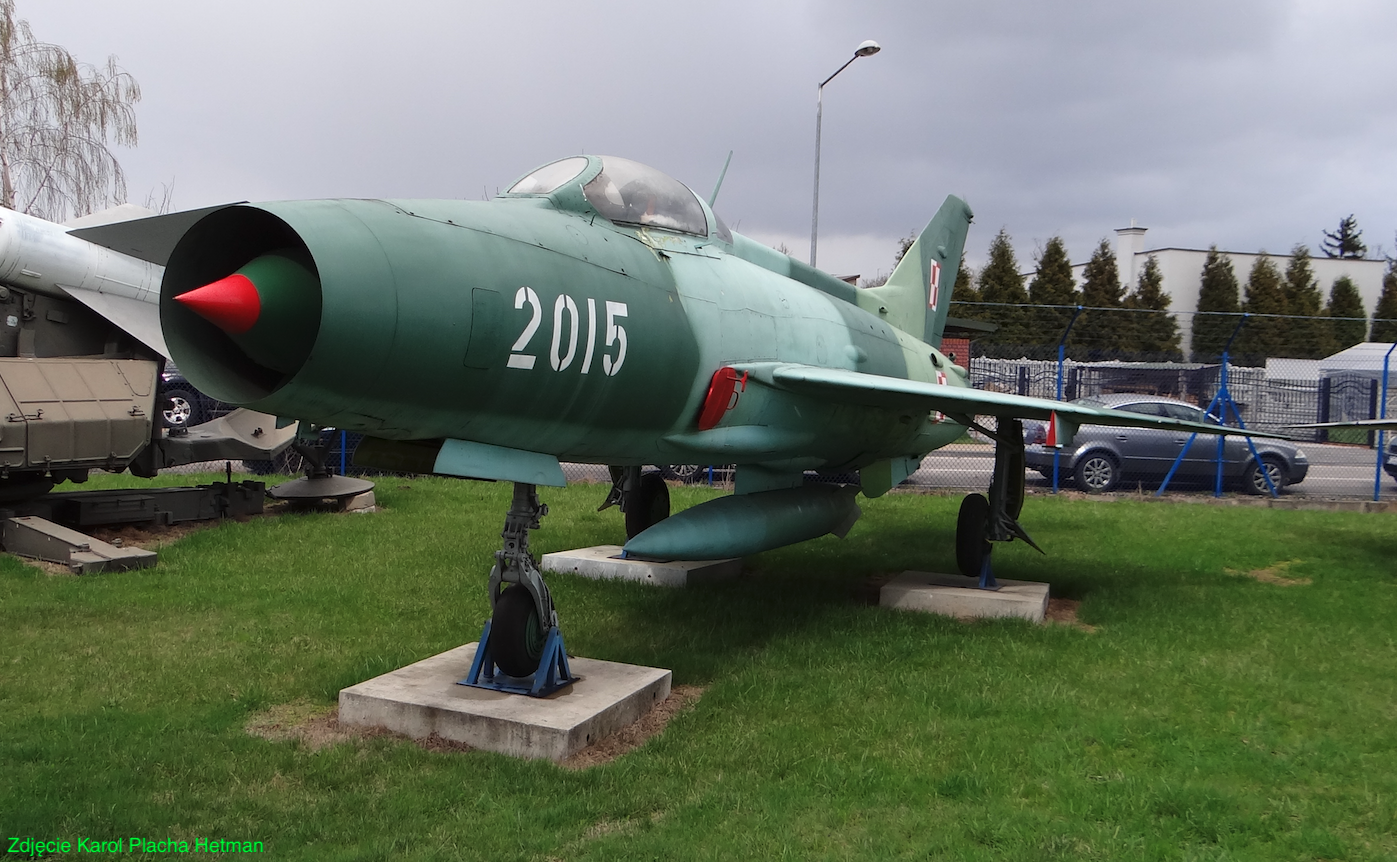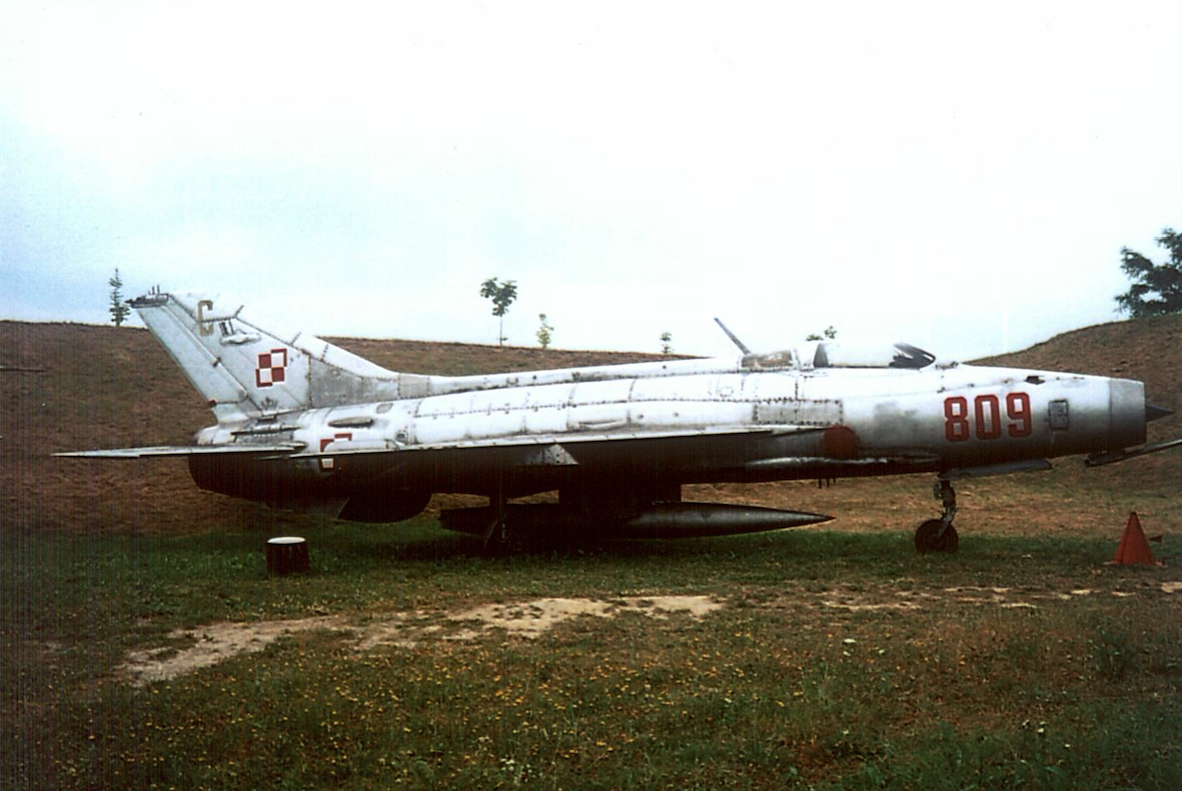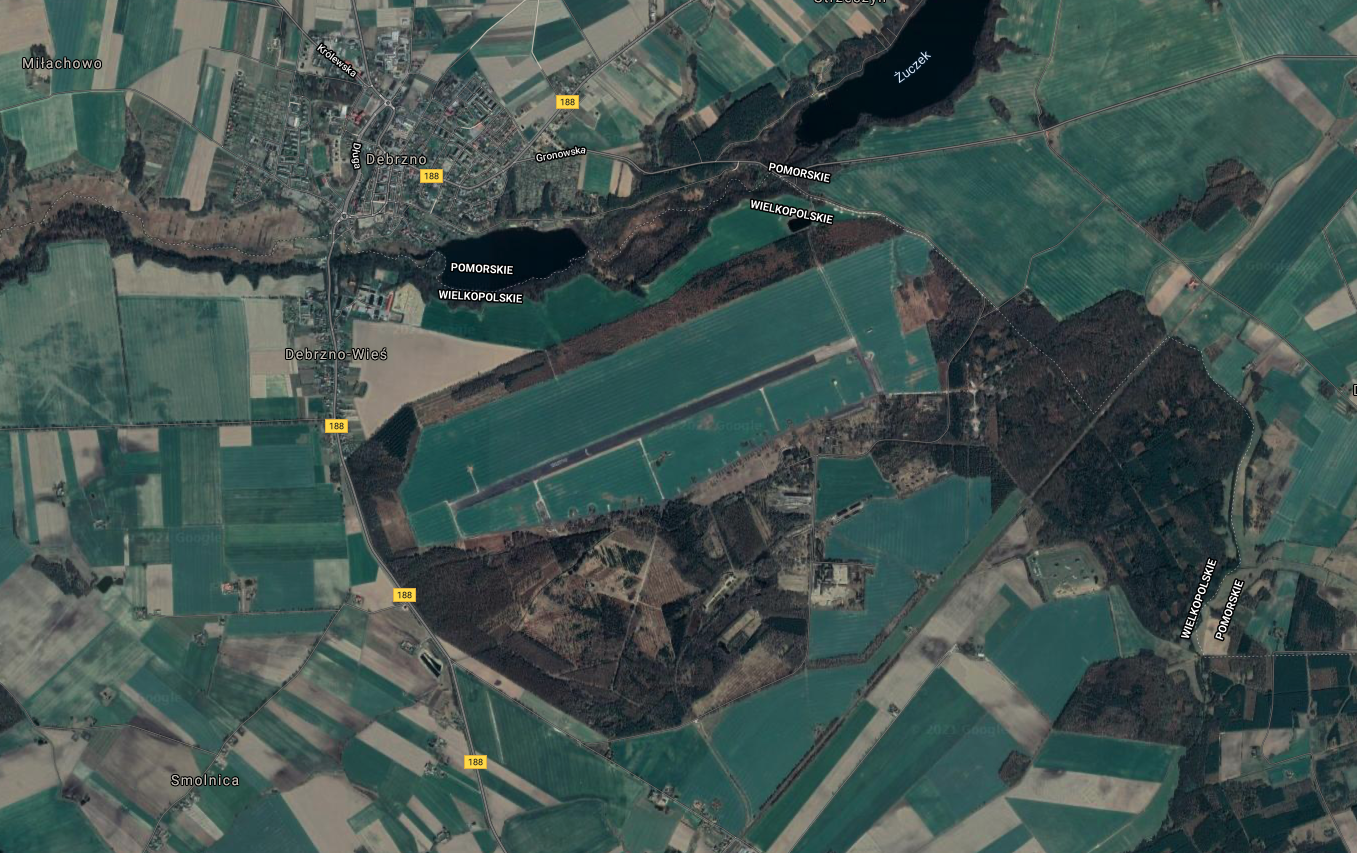Debrzno 2008-01-10
11th Fighter Aviation Regiment in Debrzno.
December 1, 1950 – September 30, 1967.
The 11th PLM will be established.
Soviet plans during World War II included the creation of the Polish Aviation Association as the 3rd Fighter-Bomber Aviation Division. Due to the lack of appropriate aircraft, the 3rd Fighter Aviation Division was formed, consisting of three fighter regiments, which were given the designations 9. PLM, 10. PLM, 11. PLM. The basis was the operational order of the Supreme Command of the Red Army of August 7, 1944, and the Executive Order of the General Staff of the Red Army, which mentioned the establishment of the 1st Mixed Aviation Corps. The place of formation was the settlement of Karłówka in Ukraine. These are around the cities of Kharkov and Kazan. The Corps was created in the period from September 1944 to January 1945.
The corps included the 3rd DLM (Fighter Aviation Division). Its formation began on September 20, 1944, on the basis of the 10th BSz-T (training brigade) from the 2nd AL. (air army).
The 3rd DLM included the following regiments; 9. PLM, 10. PLM, 11. PLM. These regiments were initially stationed in Karłówka, approximately 100 km south-west of Kharkov. They received fighter planes from the 248th PLM from Krasnograd, which at that time had incomplete personnel. Lieutenant Colonel Vasyl Dobraszov was appointed commander of the division. On September 17, 1944, training of pilots from the 9th PLM began at the Krasnogród airport, and pilots from the 10th PLM and 11th PLM began at the Karlovka airport.
The basic aircraft was the Yakovlev Yak-1 fighter, already obsolete at that time. Readiness to start hostilities was achieved at the beginning of 1945, and on January 20, 1945, the division began to be based in Poland, although the order of the CCCP Air Commander was issued only on January 24, 1945.
The Muscovites took great care to ensure that the Poles did not fight in the territory of the Eastern Republic of Poland, and they started fighting only after crossing the Bug River. At that time, the West had already agreed to the new borders established by Stalin, which the Polish Nation did not know about. The 3rd DLM was ordered to be stationed at the airports of the Kutno node. Sochaczew and Kutno area. The redeployment was carried out in several air and wheeled phases and was completed in March 1945. The regiments were then moved west closer to the front.
The 10th PLM Regiment took an active part in the battles for Berlin. The gunshots had not yet stopped, and already on May 2, 1945, the 3rd Brandenburg DLM, with its three regiments (9. PLM, 10. PLM, 11. PLM) received the order to return to Poland by being based at the Kutno junction. Polish Soldiers did not take part in the victory parades either in London or Berlin. Poland was assigned the role of a vassal. Poland, whose fighter pilots saved the British Isles from the invasion of German troops. And now, our eternal enemy, communist Russia, has become our new occupier.
After some time, the 10th PLM was transferred to Krakow to the Czyżyny airfield.
In 1946, regiments; The 9th PLM, 10th PLM, 11th PLM were subordinated directly to the Air Force Command and on January 24, 1946, by order of the Supreme Commander of the Polish Army, the 1st Fighter Aviation Division with its composition was established; 1. PLM in Warsaw, 2. PLM in Kraków (previous 10. PLM), 3. PLM (previous 11. PLM).
Formation of new air units.
The war in Korea forced Poland to create further aviation units. The General Staff of the Polish Army issued order No. 0096/Org. of December 11, 1951, under which the Air Force Command began to create the 11th DLM (Fighter Aviation Division). The order assumed the creation of the following units within the 11th DLM: 11th PLM, 24th PLM, 27th PLM, 75th Signal Company, 47th Mobile Aviation Repair Workshops.
These units were to be created in the period from May 1951 to December 1951. Poland’s difficult economic situation made it impossible to execute this order. A new order No. 0078/Org was issued. of November 19, 1952, which established the formation of tactical air units consisting of two air regiments. Therefore, the creation of the 24th PLM and 27th PLM was abandoned, and the 11th DLM received the following orders: 26th PLM from the 9th DLM, which was assigned to Zegrze Pomorskie, and 40th PLM from the 7th DLM, which was assigned to Świdwin and the remaining units of the division were also placed there.
The order to form the 11th PLM was issued on October 1, 1950. According to documents, the 11th PLM was formed in the period from October 1, 1950 to December 1, 1950. Regiment 6/101 had 222 servicemen and one contract employee. The base were air units stationed in Poznań, at the Ławica and Krzesiny airports. The command of the 11th PLM was located at the Krzesiny airport. Already in 1951, it was decided that the regiment would be equipped with MiG-15 aircraft. In fact, the regiment also had Yak-9 planes in stock.
In December 1951, the 11th PLM was incorporated into the 11th Fighter Aviation Division. At the same time, the regiment was assigned a new airfield for stationing in Zegrze Pomorskie. As new organizational adjustments occurred, the 11th PLM was assigned to the 6th DLM and remained at Krzesiny airfield. The unit of the 11th PLM was equipped with MiG-15, Lim-1, Lim-2 and Yak-11 aircraft.
In the period 1954–1955, the 62nd Fighter Aviation Regiment was formed on the basis of two squadrons of the 11th Fighter Aviation Regiment. At the same time, in 1954, the third squadron was transferred to the airport in Debrzno. The process of replenishing personnel and equipment has started in Debrzno. The 11th PLM was then incorporated into the 10th Fighter Aviation Division. In 1958, the 11th Fighter Aviation Regiment was incorporated into the 2nd National Anti-Aircraft Defense Corps with headquarters in Bydgoszcz. In June 1962, the unit was renamed the 11th OPK Fighter Aviation Regiment.
Like other regiments, the 11th PLM was struggling with personnel problems. There were few pilots and their level of training after school was low. The reason was the accelerated training mode and lower requirements for pilot candidates. Only in the unit did the pilots systematically improve their aviation qualifications.
In the fall of 1959, the 11th PLM received the first Lim-5 P planes, i.e. fighter planes equipped with a radar station as a sight. The planes were not armed with guided missiles, and in combat they used two 23 mm cannons. However, these fighters could now conduct missions at night and in worse weather conditions. The pilots received initial training at the airport in Modlin.
When the decision was made in Poland to purchase MiG-21 F-13 fighter aircraft, one of the units selected to be rearmed with this type of aircraft was the 11th PLM OPK. The first flights in Debrzno on MiG-21 F-13 aircraft began on October 17, 1963.
In 1967, the 11th PLM in Debrzno was disbanded and its place was taken by the 9th PLM. The unit of the 11th PLM appeared at the Strachowice airport. In fact, most of the cadre from the 11th PLM transferred to the 9th PLM.
Debrzno.
Debrzno is a small town located in the northern part of Poland, off the beaten path. Currently (2008) in the Pomeranian Voivodeship, Człuchów County, on the border of the Pomeranian and Greater Poland Voivodeships and near the Kuyavian-Pomeranian Voivodeship. On the Debrzynka river. On the provincial road No. 188 between Złotów and Człuchów. DOL was placed on this road towards the north-east in the 1960s. Currently (2008) closed.
The airport is located 2 km from the town center to the south-east. The airport has a runway measuring 2,500 m x 60 m, 155 m above sea level, asphalt surface, orientation 07/25, geographical coordinates 53.31 N 17.15 E.
DOL Debrzno; dimensions 2,150 m x 20 m, 160 m above sea level, asphalt surface, orientation 04/22, geographical coordinates 53.34 N 17.15 E.
Railway at the airport.
There is a Lipka Krajeńska railway station near the airport in Debrzno. There is a railway siding to the airport from this station. The Lipka Krajeńska railway station is located on route No. 203, which leads from Piła through Chojnice and Starogard Gdański to Tczew. The station is located on the Złotów – Chojnice section, on a single-track and non-electrified section. Railbuses and freight trains run there.
Commanders of the 11th PLM:
Major pilot Zygmunt Ostrowski (1950–1952). Major pilot Władysław Lewiński 1952. Major pil. Franciszek Kamiński (1952–1953). Lt. Col. Pil. Tadeusz Abramczuk (1954–1956). Lt. Col. Pil. Jerzy Bażanow (1956–1959). Lt. Col. Pil. Zdzisław Kozik (1959–1961). Lt. Col. Pil. Edward Zamorski (1961–1966). Lt. Col. Pil. Zygmunt Wojciechowski (1966–1968).
Written by Karol Placha Hetman



